Well-groomed and healthy-looking skin is not the result of a genetic predisposition, but in many respects - the right care. And only after learning how to determine the type of facial skin with great accuracy, it will turn out to choose the right care cosmetics.
This is especially important in modern realities, when brands offer a huge selection of quality products, and the effect of their use largely depends on individual characteristics.
What determines the type of human skin
Many women think they know all the features of their skin. But in reality, identifying them is not so easy. All people have a very similar skin structure. The main differences are in the intensity of the glands, as well as in the percentage of pigment that determines the shade.
A person is not able to influence these characteristics, but with age, the skin produces less and less sebum, so owners of an oily type, despite all the difficulties associated with it, have some advantage. The place of residence can also have a certain effect: the percentage of air humidity, the intensity of solar radiation, the quality of the water used for washing.
What are the types of skin
Today, there are 3 main types of skin, but they are rarely found in pure form.
Normal type
Normal skin is characterized by optimal functioning of the sebaceous glands. It looks even, smooth and matte, the pores are not expressed. There are almost no minor imperfections on such skin, because its balance is not disturbed.
She quite firmly endures any bad weather and washing with running water. Most often this type is inherent in young people in good health, but this does not mean that it can be taken for granted. Normal skin needs attention and proper care.
Bold type
Excessive work of the sebaceous glands leads to the formation of an oily skin type. There is a predisposition to enlarged pores and comedones, the skin is often shiny, it can be patchy and have a slightly painful tint.
In some cases, this type can be detected even by touch by sliding your fingers over your face. The wrong selection of caring agents can lead to the situation only getting worse.
Dry type
It is important to determine the type of facial skin before the first age-related changes appear. And this is especially true for the owners of dry skin: very thin and fragile, quickly dehydrated. It is most often found in fair-eyed and fair-haired girls. On such skin, a pink blush often appears, which, with improper care, can turn into rosacea.
The environment is very detrimental to it: in windy and dry weather, peeling, small cracks, and as a result, early wrinkles can appear. With the wrong selection of cosmetics, the first signs of aging appear ahead of time. Dry skin does not respond well to the use of soap and is often hypersensitive to new cosmetics.
How to determine your skin type:
Mixed or combined type
The most common type of skin is dry and oily, which makes it a little difficult to care for. Most often, oily areas are on the T-zone, and dry ones are on the cheeks and around the eyes.
General guidelines for determining the type of facial skin
You can identify your skin type without assistance.
The main thing is to follow a few simple recommendations:
- Before any of the tests, you need to give your skin a rest from cosmetics for 3-4 hours.
Before determining the type of facial skin, you need not use cosmetics for the next 3-4 hours. - In the daytime, the metabolic processes of the skin are slower, therefore it is not recommended to determine the type of skin from 11 am to 5 pm.
- It is recommended to repeat the test every few years, as the skin type can change with age. This can be especially pronounced during the transition period and with the appearance of the first signs of aging.
- After establishing a specific skin type, it is important to choose the right skin care products that match it. You should not completely trust the promoted brands that offer expensive cosmetics lines. Their effectiveness does not always correspond to the price.
Visual identification with a magnifying glass
The visual test is considered to be the simplest test and requires a magnifying glass and a mirror. It is recommended to carry out the test in good light so that it is easy to identify the features of the skin.
Approaching the mirror, you should examine the surface of the face through a magnifying glass and pay attention to the following:
- Are the pores enlarged?
- what is the skin tone;
- are there signs of peeling;
- whether the skin shines (especially the T-zone);
- whether inflammation is present.
How to determine the type of facial skin, the listed signs and the above characteristics will prompt.

 Don't miss the most popular column article: Face fitness for face contour lifting, rejuvenation, muscle tone. Master class from Elena Karkukli
Don't miss the most popular column article: Face fitness for face contour lifting, rejuvenation, muscle tone. Master class from Elena KarkukliTesting
A simple test will help answer the question about your skin type. When answering questions, you should write down the corresponding letters on a piece of paper. The test will help identify not only one of the four main types, but also identify sensitive or mature skin. If two or more letters occur an equal number of times, then the skin type can be attributed to combination.
In total, you need to answer 50 questions:
- Feels like dry skin - E.
- Reddish spots often appear on the face and neck - E.
- After each cleansing procedure, the skin tightens - A.
- Washing with soap-containing products brings significant discomfort - E.
- The use of a new cosmetic product often causes spots on the skin - E.
- Facial skin always looks oily or shiny - V.
- Any kind of cosmetic products do not cause negative effects - B.
- The T-zone quickly begins to shine, and it is impossible to do without powder or matting wipes - G.
- After applying the powder, already after one hour, the face seems heterogeneous - V.
- To achieve significant smoothness and softness of the skin, it is necessary to apply moisturizers at least three times a day - A.
- The skin around the eyes loses its elasticity - D.
- The frequent appearance of irritations and inflammations makes it necessary to visit a dermatologist - E.
- Small wrinkles appear around the eyes - D.
- The skin on the forehead and nose is visibly shiny - D.
- The face shines as if a cream has recently been applied to it - V.
- Creams are absorbed quickly, like a sponge - D.
- After a walk, a beautiful healthy glow appears on the skin - B.
- The use of powder leads to tightness of the skin - A.
- Allergic reactions often manifest themselves - E.
- Noticeable wrinkles appeared on the skin - D.
- The face is prone to very fast burning - E.
- Natural skin tone closer to white - E.
- Applying a moisturizer brings significant relief - A.
- The skin is matte and almost never shines - A.
- In any weather and season, the skin retains a beautiful shade - B.
- After returning from the street, a feeling of tightness appears - A.
- The pores on the face are noticeable - V.
- Often disturbed by rashes in the forehead and nose - G.
- Constant insomnia and sleep problems lead to permanent fatigue - D.
- With acne and acne on the face, you have to constantly fight - V.
- The skin appears firm and firm - B.
- There is a desire to achieve greater skin elasticity - D.
- With prolonged stay in a heated room, the skin begins to itch strongly - E.
- Freckles and other forms of pigmentation manifest themselves - D.
- The pores are more pronounced in the central region of the face than along the edges - G.
- Skin becomes tight after swimming in the pool - A.
- When the direct rays of the sun hit the skin, it always burns - E.
- Kidney problems necessitate the systematic intake of diuretics - A.
- A visit to a solarium and sunbathing under the sun has a pronounced negative effect on the skin - A.
- Age - from 35 years old.
- The skin looks fragile and thin, almost transparent - D.
- Only soap and running water are used for washing - B.
- The tan lays on the skin quite evenly - B.
- It is easy to see signs of insomnia on the face - D.
- In the summer, the skin seems more shiny than in the winter - G.
- Almost any universal cream copes with skin hydration - B.
- Facial hair removal causes red spots that last for a long time - E.
- Light day cream does not cope with dryness and flaking - G.
- You can't do without an air conditioner in your office - A.
- Before important events, acne often appears on the face - E.
For each coincidence of the above statements with the real situation, you should write down the corresponding letter, and at the end - count their number.
Total:
- If the letters "A" prevail, then the skin type is dry. To care for it, you should use products that do not have soap and alcohols in the list of components. For such skin, high-quality hydration is critically important, to achieve which you can resort not only to creams, but also to masks. For areas prone to dryness and flaking, it is best to use strong nourishing creams. Fatty products are used at night than in the morning. It is important not to forget about moisturizing the area around the eyes.
- The largest number of letters "B" indicates normal skin type. Milk should be applied to it a couple of times a day to moisturize, and after washing, it should be toned and moisturized with a light cream.
- The predominance of the letter "B" indicates that the skin is oily. Untimely cleansing can quickly lead to comedones and acne, so you need to wash yourself thoroughly at least twice a day. After washing, it is best to use special toners designed for oily skin. Throughout the day, matting lotion or wipes will help to cope with oily sheen.
- If the letter "G" is leading in the number of answers - mixed skin type. In this case, an appropriate approach to caring procedures is needed: products for oily skin are used for the T-zone, products for dry skin are used for all other areas.
- The letter "D" suitable for aging or mature skin. It is useful for her to use cosmetics rich in vitamins A and C. It is also recommended to purchase a cream containing microcollagen, retinolic or hyaluronic acid. With their help, you can increase turgor and renew the skin.
- The letter "E" indicates oversensitivity, which may be of any of the types listed above. To reduce the likelihood of allergic reactions, hypoallergenic agents should be used. Regular use of an intensive moisturizer will help prevent the development of rosacea. It is better to abandon the use of tonics completely, replacing them with products without fragrances and dyes.
Using a napkin
How to determine the type of facial skin, if the results of working with the questionnaire seem ambiguous, a simpler test using a napkin will tell you. It is carried out a few hours after washing. Before using caring cosmetics, you should refrain from doing this.
It is best to do this experiment while lying down, holding a paper napkin firmly to your face and waiting about ten minutes. Those places on the napkin where there are intense traces of sebum are areas of oily skin. The napkin will be slightly damp than greasy to the touch. If it remains completely dry, then the skin clearly needs high-quality hydration.
But in most cases, in some areas of the napkin there are pronounced or not very stains, while in others it remains dry. This speaks of combination or mixed skin type.
Rotary action
This test helps to identify the first signs of age-related skin changes, that is, to determine the mature type. Although its name sounds complicated, the method is very simple: put your thumb on the central part of your cheek and twist it.
If the skin does not curl under this effect, then the skin can be considered young. With the appearance, but the rapid disappearance of wrinkles, we can talk about the appearance of the first signs of wilting. If the skin curls without much resistance, this is a sure sign of aging skin.
Dermatoscopy
A professional dermatologist will most likely tell you how to determine the type of facial skin. For the analysis, doctors use an apparatus called a dermatoscope with high magnification and various light options.
This method is absolutely painless and safe, therefore it is regularly used to assess the condition of the skin and identify a variety of dermatological diseases. Usually it is used in cases where there are serious problems and the need for medical intervention.
Skin turgor test
Turgor or tone is called the internal pressure of skin cells and the stressed state of cell membranes. It is used as an indicator of water balance and overall skin health.
To assess this indicator, you should grab and squeeze the skin area with two fingers for a few seconds.
The area under the cheekbones is usually used:
- If it is difficult to form a fold, then the turgor can be considered excellent.
- In the case when a fold forms, but immediately straightens after releasing the skin, the skin turgor is slightly reduced.
- If the fold is formed without resistance, and does not straighten out instantly, then there is a significant deterioration in turgor.
What is a skin phototype
The phototype is the degree of sensitivity that the skin has to the effects of ultraviolet radiation. It is primarily associated with heredity. There are six phototypes in modern cosmetology.
Why you need to know the skin phototype
Phototypes are directly related to the amount of melanin produced, a substance that protects the skin from negative environmental factors.
It is very important to timely identify belonging to one of them, which is due to the following reasons:
- only knowing the phototype exactly can you perform many cosmetic procedures and operations;
- the selection of sunscreen and the required degree of protection directly depends on the phototype;
- by identifying the phototype, the appearance of skin cancer can be prevented.
Fitzpatrick phototype determination
Despite the fact that in the modern world there are dozens of phototype classification systems, the most often used is a simplified method, which was developed more than forty years ago by Thomas Fitzpatrick.
It distinguishes six types, and for convenience, each corresponds to a number:
- I - "Celtic" or in some interpretations "Scandinavian". The skin is very light, milk-colored, sometimes slightly pinkish. She is incapable of sunburn, instantly gets burned if she does not use special cosmetics. Owners of this type most often have light eyes, reddish or blonde hair, and there is a tendency to the appearance of pigmentation.
- II - "light-skinned European". Features are fair skin, hair (no darker than medium light brown or light brown) and iris. Such people are also very likely to burn quickly, but there is no red pigment in their skin tone.
- III - "black European". The skin of such people is slightly dark, sometimes resembling ivory, and the hair color can vary from dark shades of light brown to classic brown-haired. The eyes are usually dark, but no pigmentation appears. Usually, the skin responds adequately to the rays of the sun, but in rare cases it can burn.
- IV - "Mediterranean". The advantage of this type is that the tan lays down perfectly and lasts for a long time. Skin tone is usually closer to dark skin, with olive tones. Hair - black or dark brown, deep dark eye color.
- V - "Asian", it is also called "Middle Eastern" or "Indonesian". Its representatives have dark brown skin, which is practically insensitive to the sun. Hair is black and straight.
- VI - "African". These are people with dark, sometimes even black skin, who have never experienced sunburn. They also have dark hair and eyes.
Based on the skin phototype, you can choose the perfect sunscreen. The SPF on the package measures how many times longer it takes to get the same amount of sun exposure that occurs without protection.
For example, a person with a second skin phototype will burn after 10 minutes of exposure to bright sun. If you use a cream with an SPF level of 30, then it will take about three hours. Therefore, people with phototypes I and II need products with a higher SPF.
We must not forget that even the highest possible level of protection is not capable of one hundred percent neutralizing the effect of ultraviolet radiation.
How to tell if your skin tone is cold or warm
Psychologically, all people divide shades into warmer and colder ones. But in reality, not everything is so simple: not every red is warm, and not every blue can be classified as cold.
This is due to the fact that tone and subtone can be distinguished in each color. If we talk about human skin, then it is not always easy to determine its subtone, so there are several methods that can be used.
Skin with a warm undertone is closer to shades of yellow. It doesn't matter how dark or light it is. Skin with a cold undertone is closer to a pinkish or bluish tint. Less common is a neutral undertone, in which both warm and cold shades are present in equal proportions. Unlike combination skin, only a very small percentage of people can be attributed to it.

 Don't miss the most popular column article: Facial massage according to the system of the Japanese doctor Asahi Zogan.
Don't miss the most popular column article: Facial massage according to the system of the Japanese doctor Asahi Zogan.Jewelry test
One of the most interesting ways to determine skin tone is jewelry. It will require several pieces of jewelry, the more the better. They should be worn at the same time, and then determine which ones look best when paired with leather. If it is gold and gilded metals, then the skin tone is warm.
That is why gold jewelry is so loved by women from China and India. If the leather looks better with white metal products, then the undertone is rather cold. Sometimes it is impossible to answer this question with great accuracy, because all metals look equally harmonious, and then the skin is neutral.
Determination of skin tone by vein color
A very simple visual test will tell you how to determine the type of facial skin in terms of undertones. You should take a close look at the color of the veins in the wrist area. If they have a shade close to greenish, then the skin tone is rather warm. If it is closer to bluish, it is cold. In cases where both shades are present, we can talk about a neutral undertone.
Checking with a white paper sheet
Factors such as the color of hair, clothing or jewelry often interfere with correctly identifying the belonging of the skin to a particular sub-tone. You can solve this problem by taking a perfectly white color as a sample.
A high-quality sheet of plain white paper with a smooth texture is perfect for this. Against this background, it is usually very easy to understand which subtone the skin belongs to.
Sun exposure
Slightly inferior to the rest in accuracy, but still the popular method of identifying undertones is very simple: you need to take into account the usual skin reaction to sun exposure. If she tans easily and practically does not blush, then the undertone is closer to warm. In the opposite case - to the cold.
But among dark-skinned women who do not tan at all, there are many representatives of the cold undertone. In such controversial cases, it is worth doing additional tests.
Makeup and clothing
This test is a bit like a jewelry test. You need to try on several options for clothes in different colors or try on different makeup options. Girls with warm skin tones are much more suitable for warm tones, but the opposite rule also works.
Determination of skin tone with draperies
The most accurate method is to apply tissues of different shades to the skin of the face. Fabrics of unsuitable color will cast an ugly shadow on the face, and suitable ones will be in harmony with it. The correct shades of fabric make the appearance look more youthful and expressive. This method seems complicated at first, but over time, the intricacies become more apparent.
It is important to perform this test without makeup and in natural daylight.
What is a color type
The theory of color types is based on the fact that in the appearance of each girl there are shades that can be compared with one of the four seasons. Based on this, you can choose clothes and makeup, emphasizing the features of your appearance.
Types of color types
There are 4 color types:
- Color type "Winter" corresponds to light skin with a cold undertone or dark skin with a tint of olive, which comes in sharp contrast with the color of the hair and eyebrows. Eye color can be dark brown, deep black, cool blue or green. No pigmentation appears on the face. Hair and eyebrows are most often brown or black.
- "Summer" - softer and lighter color type. These girls have milky white or olive skin, light brown hair. Hair color does not appear in stark contrast to skin tone. Eyes - blue or green, hair - from classic blond to deep brown.
- "Spring" - very light, airy color type. Its owners have blonde hair with undertones of red or gold, rich and deep light shade of eyes. The skin is light and literally radiates warmth from within.
- "Fall" - very soft and deep color type. It is matched by the golden glow of the skin and very little contrast with the hair. The most common are brown eyes, but there are also deep shades of olive and amber. Hair and eyebrows - closer to black, red or brown with a golden tint.
How to determine the color type
Finding out which color type the appearance belongs to can be very difficult.
Therefore, it is recommended to follow these tips:
- To come to the most objective result, it is better to call someone for help.
- The test should be carried out in good lighting, best of all in neutral sunlight.
- A room with white walls and a large mirror is best suited for determining the color type. All bright objects are best kept away.
- It's important to get rid of makeup, jewelry, and flashy accessories.
- If the hair is dyed, it is recommended to hide it under a scarf of a neutral color.
- Clothing should also be as neutral and discreet as possible.
- When determining the color type, one should rely not only on the characteristics of the skin, but also on the natural color of the hair and eyes.
By following the tips and techniques above, you can quickly and easily learn about the most important skin features. Correct determination of both the type of facial skin and its other characteristics will greatly simplify the selection of caring procedures and cosmetics, sunscreens, and even clothing and makeup.
Article design:Lozinsky Oleg
Video on how to determine complexion
3 ways to determine your face tone:

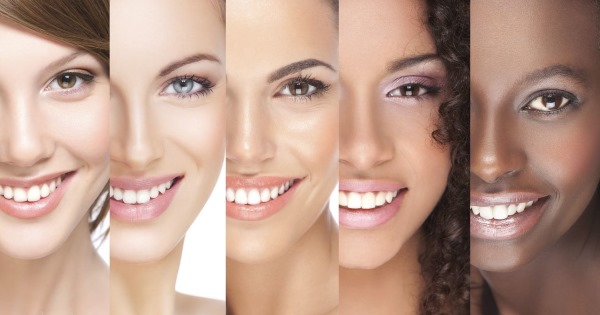
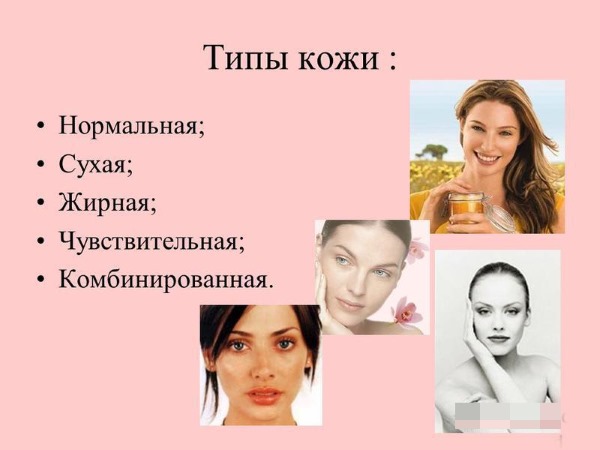
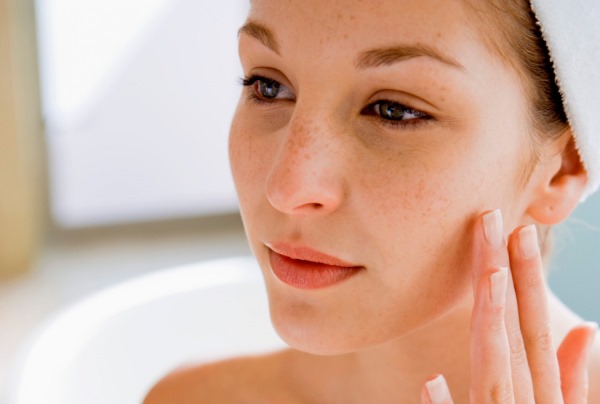
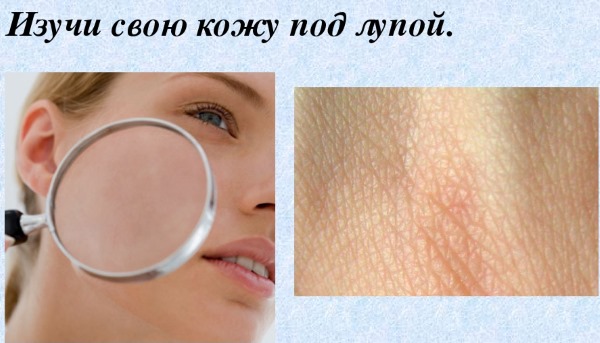

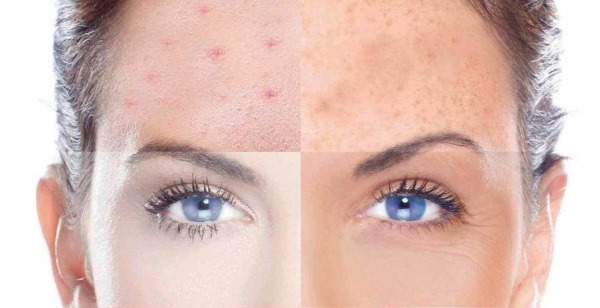
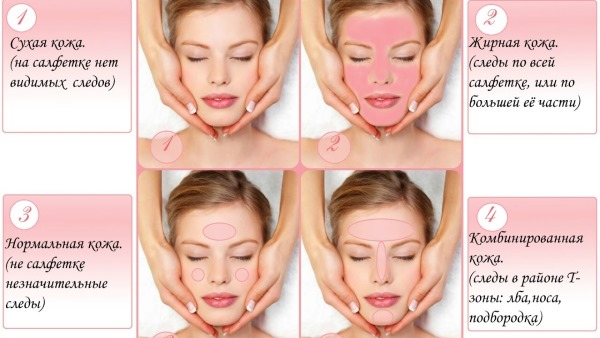
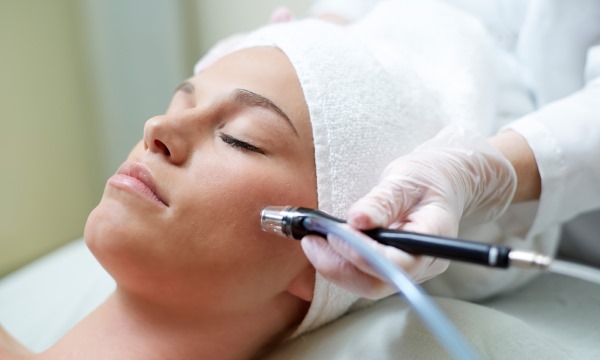

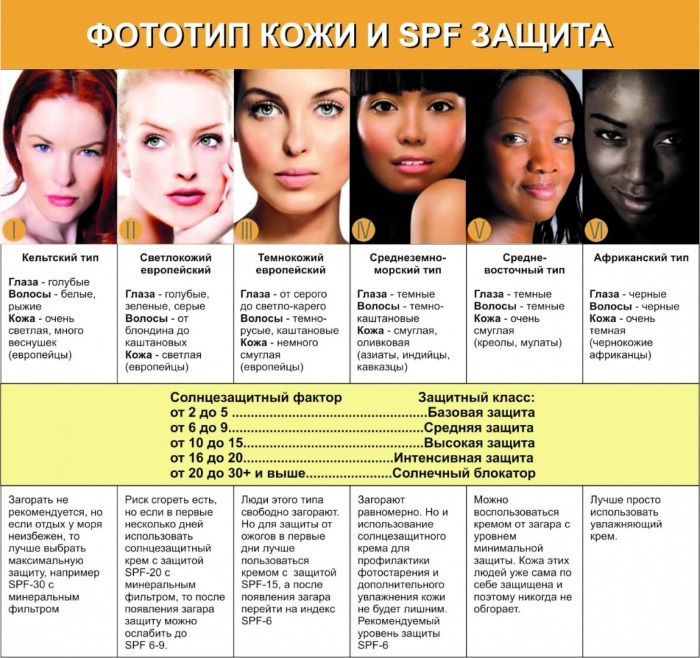


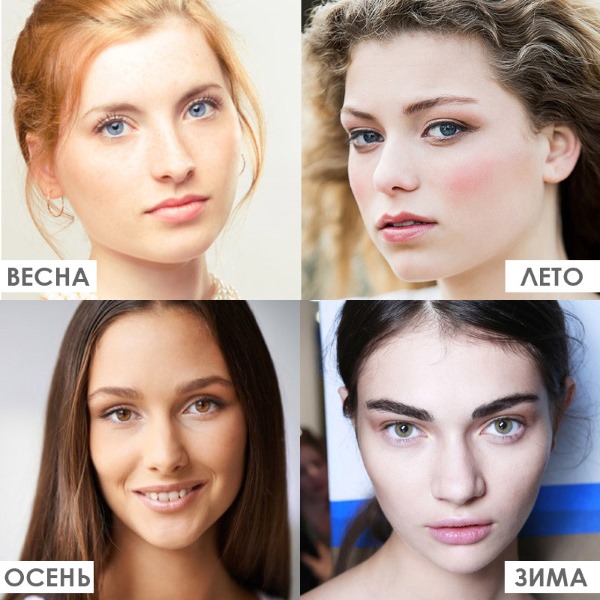
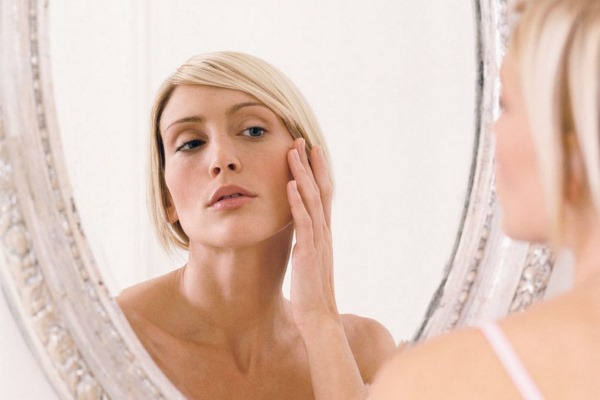
Thank you for the article. My question was fully answered. Without water, in fact and to the point. I add the site to bookmarks))